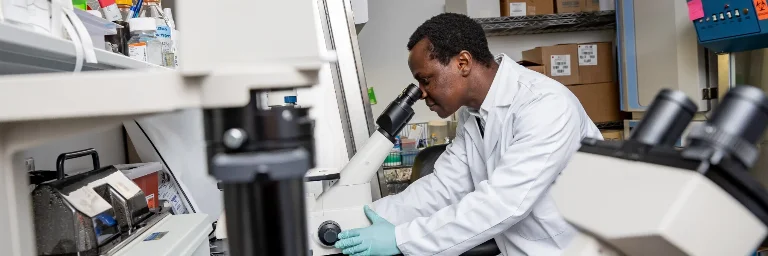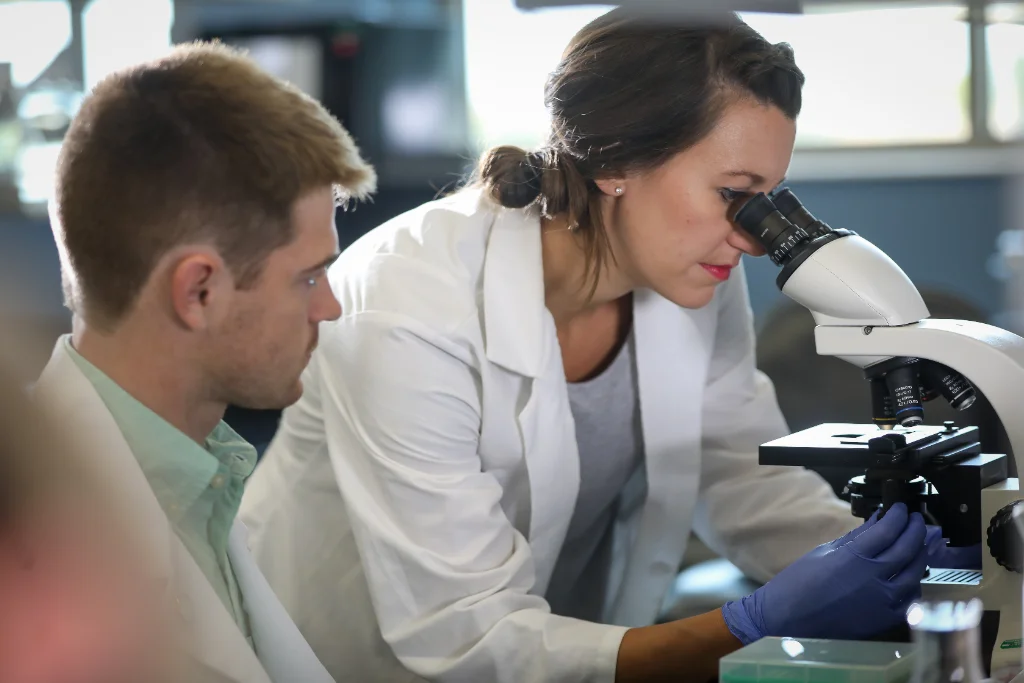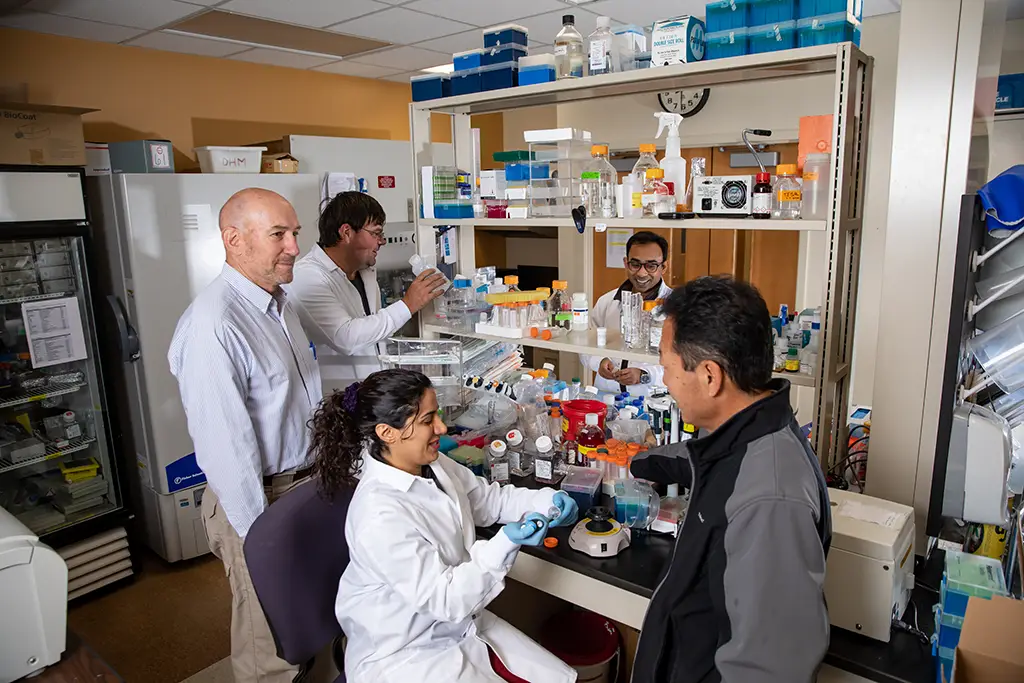
What is Biomedical Engineering?
Engineers solve problems and make things. Biomedical Engineers design devices, processes, and algorithms which promote human health and wellness.
Understanding Biomedical Engineering
Request Information
In order to fully understand biomedical engineering and the crucial roles that professionals play within this field, it is important to explore both the overarching concept and the specific tasks that biomedical engineers undertake.
What is Biomedical Engineering?
Biomedical Engineering blends traditional engineering skills such as Mechanical, Electrical, Chemical, or Software Engineering with knowledge of human anatomy and physiology.
What do Biomedical Engineers do?
Biomedical Engineers often serve as “the glue” between experts in medicine and engineering because they understand the unique tools and vocabularies of both groups. Biomedical Engineers design, build, and test new devices, processes, and algorithms to improve human health. Things a Biomedical Engineer might work on include prosthetic limbs, blood pressure monitors, wearable continuous glucose monitors (for diabetes), implantable pacemakers, 3D printed synthetic organs, and algorithms that detect and warn of a disease before severe symptoms occur.
What qualifications do you need to become a Biomedical Engineer?
Knowing the educational requirements, as well as the expected experience and skills, can help individuals make informed decisions about their academic pursuits and professional development. In the following sections, we will discuss the educational and experiential qualifications required to embark on a career as a biomedical engineer.
Education
Most engineering degrees are ABET accredited, and Biomedical Engineering is no exception. Accredited engineering degrees start with a strong foundation in basic math (calculus) and science. Biomedical Engineers then use this foundation in their advanced courses where they learn to develop electronic circuits, model mechanical structures, formulate biocompatible materials, and code algorithms which interpret signals from the body. Advanced BME courses may focus on particular topics such as neuroengineering, bioinformatics, biomechanics, cardiac monitoring, medical imaging, or RF sensing. Class projects give students the opportunity to explore different technical roles/skills while also developing professionalism and design skills.

Experience
Employers are seeking individuals with a blend of technical, creative, and interpersonal skills. Project teams are increasingly distributed; engineers must possess digital skills to work collaboratively with colleagues around the globe. Though engineering jobs continue to prize degrees, employers are increasingly looking for employees who have proven/demonstrated their skills through projects, internships, co-ops.
Biomedical Engineering: Areas of Specialization
Biomedical engineering encompasses various areas of specialization, with each focusing on different aspects of healthcare and technology and offering unique opportunities for professionals. By gaining insight into these different areas of biomedical engineering, aspiring professionals can make informed choices about their career trajectories, ensuring they pursue avenues that resonate with their passions and professional goals.
Biomechanics
Biomechanics sits at the intersection of biology and physics. This field of study spans a litany of disciplines, including sports science, medicine, ergonomics, physical therapy, and even space studies. Motion capture technology in this field is also similarly prolific, permeating nearly every aspect of our current society, from the latest CGI movie or video game to even those filters on X (Twitter).
Biomechanics is the study of posture and movement. From prosthetics to shoes to running blades, engineers working in biomechanics seek to understand how the body moves, transmits power, and absorbs shocks. This field studies car crashes, sports injuries, and traumatic brain injuries.
Bioinstrumentation
Over the past two decades, electronics have become smaller, lighter, and more capable. Coupled with Bluetooth, WiFi, and Cellular radios, we can easily collect data from a multitude of small devices and aggregate all that data in the cloud. But, before we transmit, graph, and analyze data, we first need to acquire precise and accurate measurements. Bioinstrumentation focuses on measuring various indicators of human health such as heartbeat (ECG), brain activity (EEG, EMG), breathing and blood pressure. Biomedical Engineers are working to retain the accuracy and diagnostic power of hospital-grade instruments while making them more comfortable and shrinking them down for home/mobile use.
Biomaterials
Biomaterials researchers apply their knowledge of biology, chemistry, mechanical engineering, and chemical engineering to create everything from high-performance bio-compatible materials (e.g. bone/joint replacement) to synthetic organs.

Biomedical Engineering: Job Growth and Salary
The job outlook for biomedical engineers in the United States was promising. The U.S. Bureau of Labor Statistics projected a 5% increase in jobs from 2022 to 2032, which is about as fast as the average for all occupations. This growth was attributed to an aging population and the increasing demand for medical devices and procedures. However, it's essential to stay updated with the latest data as trends may change over time.
Regarding salaries, biomedical engineering is generally considered a lucrative field. According to the Bureau of Labor Statistics, the median annual wage for biomedical engineers in 2020 was $92,620. However, salaries can vary depending on factors such as education, experience, location, and the specific industry in which one works. For example, those employed in research and development typically earn higher salaries than those in manufacturing or government positions.
Conclusion
In conclusion, biomedical engineering represents the dynamic intersection of traditional engineering disciplines with a deep understanding of human biology and health. Biomedical engineers serve as pivotal connectors between the realms of medicine and engineering, leveraging their expertise to innovate and create solutions that enhance human wellness. With a strong foundation in math and science, coupled with hands-on experience and digital proficiency, individuals can embark on a journey into various specialized fields within biomedical engineering, from biomechanics to bioinstrumentation to biomaterials. As technology continues to evolve, so too does the potential for biomedical engineering to revolutionize healthcare, offering hope for improved diagnostics, treatments, and overall quality of life.
FAQs
Biomedical engineering typically focuses on the creation of devices, machines, and synthetic materials while Biotechnology may focus more on pharmaceuticals or genetic manipulation. At the risk of over-simplifying the matter, biomedical engineering creates the tools that biotech uses.
Artificial intelligence (AI) and machine learning (ML) are powerful data analysis and trend recognition tools. But, these exciting new tools require large volumes of high-quality data as input. Biomedical Engineers have an important role to play in acquiring reliable data and training the AI/ML.
Yes and no. The programs best matched to pharmaceutical work call themselves “Bioengineering” rather than “Biomedical Engineering”. But, pharmaceutical companies still use myriad sensors, electronics and software to monitor and control their manufacturing lines; Biomedical Engineers are well equipped for these roles.
Biomedical Engineering is very interdisciplinary; the unifying element is the application: human health. Individuals with a passion for human health can apply their skills in electrical, mechanical, software, or chemical engineering. In contrast, traditional engineering disciplines tend to prioritize the skill set and only later identify a particular industry/application in which to use them.